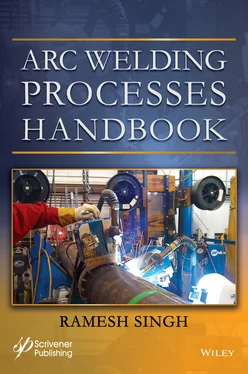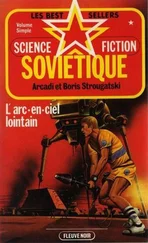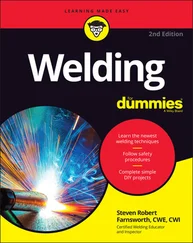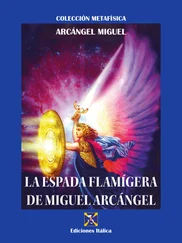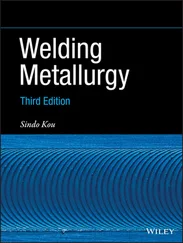1 Cover
2 Title Page
3 Copyright
4 List of Figures
5 List of Tables
6 Foreword
7 Preface
8 1 Introduction to Welding Processes1.1 Synopsis 1.2 Keywords 1.3 Welding 1.4 Defining Welding 1.5 Welding and Joining Processes 1.6 Arc Welding 1.7 Efficiency of Energy Use 1.8 Welding Procedures 1.9 Qualification of Welders and Operators
9 2 Shielded Metal Arc Welding (SMAW)2.1 Synopsis 2.2 Keywords 2.3 Introduction 2.4 Process Fundamentals 2.5 How the Process Works 2.6 Power Sources 2.7 AC Power Sources 2.8 Direct Current Power Sources 2.9 Welding Safety and Personal Protecting Equipment 2.10 Covered Electrodes Used in SMAW Process 2.11 Welding Training – Making of a Welder 2.12 Welding Other Metals 2.13 Welding and Fabrication of Duplex Stainless Steels 2.14 SMAW Welding Nickel Alloys 2.15 Minimizing Discontinuities in Nickel and Alloys Welds 2.16 Review Your Knowledge
10 3 Gas Tungsten Arc Welding3.1 Synopsis 3.2 Keywords 3.3 Introduction to Gas Tungsten Arc Welding Process 3.4 Process Description 3.5 How the Process Works 3.6 Process Advantages and Limitations 3.7 Power Sources 3.8 Shielding Gases 3.9 Gas Regulators and Flowmeters 3.10 GTAW Torches, Nozzles, Collets, and Gas Lenses 3.11 Tungsten Electrodes 3.12 Joint Design 3.13 Power Source Remote Control 3.14 Installation of Welding Machines 3.15 Power Source Cooling System 3.16 Welding Connections – Welding Cable and Welding Torch Connections 3.17 Welding Power Source Classification by NEMA 3.18 Welding Personal Protecting Equipment 3.19 Other Essential Clothing for Welders 3.20 Filler Wires Used in GTAW Process 3.21 Classification and Identification of Welding Wires 3.22 The Aluminum Alloy Temper and Designation System 3.23 Welding Metals Other Than Carbon and Alloy Steels 3.24 GTAW Welding of Aluminum 3.25 GTAW Welding of Stainless Steel 3.26 Mechanical Properties 3.27 Welding Nickel Alloys 3.28 Later Developments in GTAW Process 3.29 Plasma Arc Welding 3.30 Review Your Knowledge
11 4 Gas Metal Arc Welding4.1 Synopsis 4.2 Keywords 4.3 Introduction to Gas Metal Arc Welding Process 4.4 Process Description 4.5 Components of the Welding Arc 4.6 Effects of Variables on Welding 4.7 Advanced Welding Processes for GMAW 4.8 The Adaptive Loop 4.9 Advanced Waveform Control Technology 4.10 Equipment for GMAW Process 4.11 GMAW Power Sources 4.12 Installation of Welding Machines 4.13 Welding Various Metals 4.14 Welding Nickel Alloys 4.15 Minimizing Discontinuities in Nickel and Alloys Welds 4.16 Calculating Heat Input in Pulsed Arc GMAW 4.17 Review Your Knowledge
12 5 Flux Cored Arc Welding (FCAW) Process5.1 Synopsis 5.2 Keywords 5.3 Introduction to Flux Cored Arc Welding (FCAW) Process 5.4 Process Description 5.5 Welding Wires/Electrodes 5.6 Power Sources 5.7 Other Accessories to Power Source 5.8 Shielding Gases 5.9 Welding Various Metals 5.10 Tips for Good Welding by FCAW Process 5.11 Test Your Knowledge
13 6 Submerged Arc Welding (SAW)6.1 Synopsis 6.2 Keywords 6.3 Introduction to Submerged Arc Welding (SAW) Process 6.4 Operating Characteristics 6.5 Submerged Arc Welding (SAW) Process 6.6 How the SAW Process Works 6.7 SAW Process Variants 6.8 SAW Power Source and Equipment 6.9 Welding Heads (Gun) 6.10 Fluxes 6.11 Submerged Arc Welding Various Metals 6.12 Test Your Knowledge
14 7 Useful Data and Information Related to Welding and Fabrication7.1 Common Weld Symbols and Their Meanings 7.2 Fillet Welds 7.3 Groove Welds 7.4 Pipe Schedule 7.5 Terms and Abbreviations 7.6 Procedure Qualification Range as Per the Material Group 7.7 Material Qualification Rage for Procedure Qualification Based on P-Numbers 7.8 Temperature Conversion 7.9 Useful Calculations 7.10 Effect of Temperature on Gas Cylinder Pressure
15 Index
16 End User License Agreement
1 Chapter 1 Figure 1.1 General lay out of welding and joining processes.
2 Chapter 2 Figure 2.3 A SMAW welder welding on a pipeline project. Figure 2.4 Typical SMAW setup. Figure 2.5 Welding arc action and various components of welding. Figure 2.6 Above (2 graphs), graph 1 above, shows the volt-ampere curve, (output... Figure 2.7 The schematic above shows the key components of an AC transformer. Figure 2.7.3 Schematic of a movable shunt type transformer control. Figure 2.7.4 A schematic of a movable coil reactor, the position of the reactor ... Figure 2.7.5 A magnetic amplifier transformer output control, the diode allows t... Figure 2.7.6 The top portion of the figure shows the use of diodes – shown in Re... Figure 2.7.7 A schematic drawing of single-phase DC power source with SCR bridge... Figure 2.8.1 Shows the schematic of single phase bridge type rectifier. Figure 2.8.2 Three phase bridge-type rectifier. Figure 2.8.1.1 Schematic diagram of a DC generator. Figure 2.8.1.2 Circuitry of an exciter system. Figure 2.8.3 Current conversion and resulting wave forms. Figure 2.8.3.1 Copper and aluminum welding leads: note the number of fine wires ... Figure 2.8.3.2 Different types of SMAW electrode holders. Figure 2.8.4.1 Various types of cable connectors, and ground clamp. Pictures cou... Figure 2.8.5.1 NEMA rating. Figure 2.9.1 A typical hand-held welding shield. Figure 2.9.2 Miller Digital Elite helmet. Figure 2.9.3 A typical welding helmet. Figure 2.10.2 Portfolio of SMAW electrodes. Figure 2.10.3 AWS electrode classification method. Figure 2.10.5.1 Shop use electrode drying oven. Figure 2.10.5.2 Portable electrode holder also called quivers. Figure 2.11.1 Different types of weld joints. Figure 2.11.2 Different types of weld designs. Figure 2.11.3 Welding positions for welding a plate, the positions are primarily... Figure 2.11.4 Positions of plate and pipe butt welds and fillet welds with both ... Figure 2.11.5 Above figure shows the permitted angular tolerance for specificall... Figure 2.11.3.1 Testing a fillet weld. Figure 2.11.3.2 Testing a fillet weld using a hammer. Figure 2.11.3.3 Size and nomenclature of fillet weld. Figure 2.11.3.4 A single pass fillet weld. Figure 2.11.3.5 A single pass fillet weld with (arc termination) stop in the mid... Figure 2.11.3.6 A multi-passes fillet weld-note the termination of arc start and... Figure 2.11.3.7 A micro-etch of a double sided two pass fillet weld – compare th... Figure 2.11.4.1 Weld appearances matched with arc current, and arc travel speed. Figure 2.11.4.2 Pictures of the weld appearances and probable cause for the qual... Figure 2.11.5.1 Offsetting the weld setup for distortion control. Figure 2.11.9 This is a rotator with one end of the pipe held in a three-jaw, se... Figure 2.11.10 This rotator is similar to the one above except that the pipe end... Figure 2.11.11 A heavy-duty rotator. Figure 2.11.12 Weld tacks bridging two pieces of pipe. Figure 2.11.13 Shows a removable tack. Figure 2.11.14 This picture shows both the bridge tack using external pieces of ... Figure 2.11.15 Typical CS pipe weld.Figure 2.11.10.1 Bevel edge preparation for vertical-up pipe in 6G position.Figure 2.11.10.2 The vertical up progression - note the direction of electrode m...Figure 2.11.11.1 Vertical down progression.Figure 2.11.11.2 Weld profile of each pass.Figure 2.11.11.3 The sketch above shows a typical weld layers of several passes ...Figure 2.12.6 Aluminum fillet weld-bend testing.Figure 2.12.12 Typical stainless-steel pipe weld, and weld-o-let on the header.Figure 2.12.13 Pipe is assembled and prior to welding, the welder is tacking the...Figure 2.12.18 Schaeffler diagram.Figure 2.12.19 DeLong diagram.Figure 2.14 Nickel alloy plate being welded.Figure 2.14.1 Nickel is in 10th group and 4th period in the periodic table, its ...Figure 2.14.2 Typical nickel welding electrodes – note the electrode identificat...Figure 2.14.3 Nickel alloy welding (note the fillet weld in upward progression).
3 Chapter 3Figure 3.3.
Читать дальше
